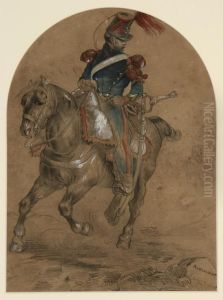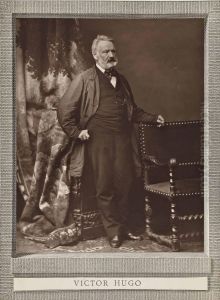Bertall Paintings
Bertall, born Albert d'Arnoux on December 18, 1820, in Paris, France, was a prolific French illustrator, caricaturist, and author, known for his humorous and satirical works. His pseudonym 'Bertall' was a playful anagram of his first name, Albert. He was active during the 19th century, a period that saw significant political and social upheaval in France, events which he frequently depicted in his work.
Bertall started his career in the 1840s, contributing to magazines like 'Charivari', where he became known for his sharp wit and distinctive style. His illustrations often accompanied texts in various publications, and he was regarded as one of the most important caricaturists of his time, alongside Honoré Daumier and Gustave Doré. Bertall's work was not limited to caricatures; he also produced numerous wood engravings, a common illustration method of the era.
In addition to his work as an illustrator, Bertall was also a writer. He published several books, some of which he illustrated himself, such as 'La Vigne, voyage autour des vins de France'—a tour of French vineyards—and 'La Comédie de notre temps.' His literary contributions added to his reputation as a keen observer of French society and culture.
Bertall's illustrations were not confined to adult readers. He also produced work for children's literature, including fairy tale collections and adventure stories, which helped to shape the genre in France. His versatility and ability to engage with a wide audience cemented his status as a significant figure in the world of French illustration.
Later in his career, Bertall's popularity waned as tastes in art and satire shifted. He continued to work, but the new generation of artists and the changing political climate meant that his style was no longer in vogue. Despite this decline in prominence, his early contributions to the world of caricature and illustration remained influential.
Bertall died on March 24, 1882, in Soyons, France. Although his name might not be as well-recognized today as some of his contemporaries, his work remains a valuable part of the history of French art, providing insight into the society and politics of his time through the lens of humor and satire.

